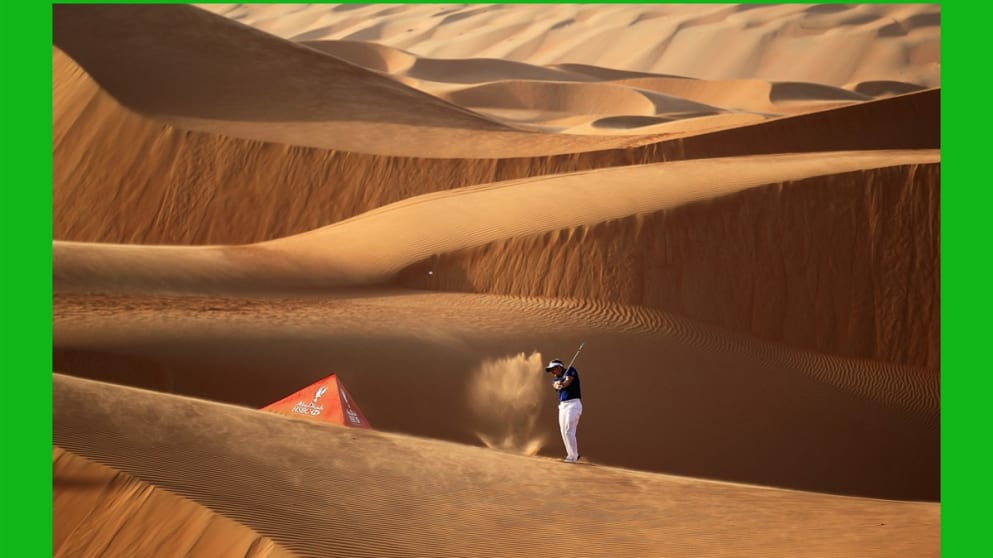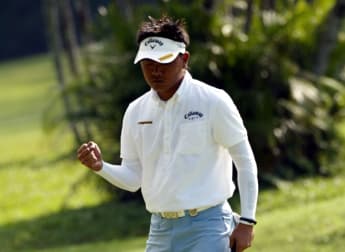John Hopkins of Global Golf Post gives his take on The European Tour's "Desert Swing".
Three successive tournaments in the Middle East are currently giving a glimpse into the past, present and future of the European Tour in that part of the world. The past was represented by the annual reminder that the Tour has been playing in this part of the world since the first Dubai Desert Classic in 1989.

The present was represented by events in Abu Dhabi, Qatar and Dubai, the biggest of which was the Abu Dhabi HSBC Golf Championship. This tournament has leaped to prominence and this year it had six of the world’s top-10 players and Tiger Woods competing in it and thus more world ranking points than the concurrent Farmers Insurance Open in the U.S. And the future of the European Tour in the Middle East?
Once the Arab Spring – the series of democratic uprisings that spread across many of the nations of the Middle East, starting in 2010, and which caused the Volvo Golf Champions in Bahrain to fall off the schedule for 2012 – becomes a thing of the past and the region returns to stability, the future of the Tour in this part of the world surely will include more events.
The advance out of Europe and into the Middle East has been one of the European Tour’s greatest recent achievements. Suddenly, the cold weather in wintry Europe does not matter. The poor condition of many golf courses on that continent at the beginning of the year is not a worry nor is the lure of the PGA Tour, which is so strong at other times of the year.
The players have noticed and they are grateful.
“The courses are usually in good shape,” Sergio Garcia said. “It is usually nice weather, which is tough to get in most parts of Europe at this time of year. And they manage to get great fields. When you get a tournament with the calibre of player that you get here, in Qatar and in Dubai …it is obviously an asset.”
If it’s easy to see the attraction of the events for players and administrators on the European Tour, it is equally easy to realise why more countries in this part of the world want to stage big tournaments.
“This event has been invaluable in establishing (Abu Dhabi) on the international golf tourism map,” Faisal Shaikh, of the Abu Dhabi Tourism Authority, said. “Our golf tourism proposition is being driven by the diversity of our offering; we have three stunning championship courses within a 25-mile radius of the capital city as well as an 18-hole country course, which is a unique sand golf course. Golf tourists can now come to Abu Dhabi and play a different course for six consecutive days.
“That is diversity.”The appeal of these events was demonstrated in Abu Dhabi recently. While a cricket Test match between England and Pakistan was going on down the road, the Abu Dhabi HSBC Golf Championship was putting on a show of its own a few miles away. Little girls in pigtails and with painted faces ran around behind the ninth and 18th greens. The sky was blue and cloudless. English was the predominant language, often spoken with a Scottish accent, though German was heard as well as Arabic. It was a reminder that this part of the Middle East is where the Occident meets the Orient.
This desert swing dates to the 1980s after the European Tour moved into North Africa and embraced the 1982 Tunisian Open, followed by the Moroccan Open five years later.
“I think these factors influenced Karl Litton, the designer of the Emirates course in Dubai, to approach us with a view to starting the Desert Classic,” Ken Schofield, the former executive director of the European Tour, said. “We were immediately keen to add the event to the growing Tour schedule and we had little or no issue with the players in this further extension “away from Europe.”
After the Desert Classic started in 1989, another event was added in 1998 in Qatar, a sovereign Arab state bordering Saudi Arabia on the Arabian Peninsula. Suddenly, a run of events in this part of the world became a possibility. But for the Arab Spring, the Bahrain tournament might still be on the European Tour’s schedule.
“I am not hearing good things about Bahrain being back in 2013,” said George O’Grady, the Tour’s current CEO.
On the other hand, there are rumours about Oman wanting to join the swing of tournaments in the Middle East and Saudi Arabia might join in, too. So, from one event in this part of the world 23 years ago, there could be as many as six in the next couple of years.
“Abu Dhabi is the first fully sanctioned event of the year,” O’Grady said. “The course is in great shape. The players are feted and put up in the world’s best hotel. Despite the economic recession and the Arab Spring, I would have to give it close to 10 marks out of 10.”
It is doubtful if even a single voice was raised in disagreement.
For more from Global Golf Post and to subscribe to your free copy each week, visitwww.globalgolfpost.com






